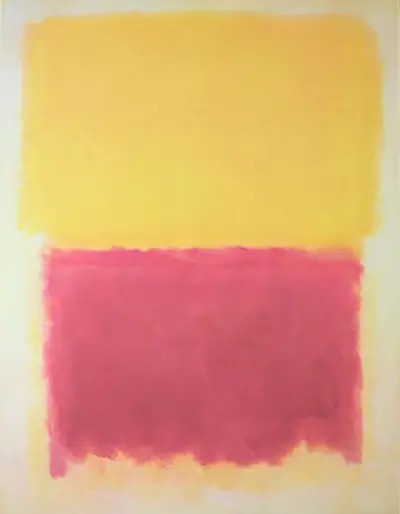Beige, Yellow and Purple
Many consider Mark Rothko to be one of the founders of abstract expressionism. Most of his works conveyed inner feelings of emotions, with many coming from his personal life. Mark, however, never thought of himself as an abstract painter but rather as an expressionist of human emotions. He viewed art not as a decorative piece but as a tool to communicate inner feelings.
Mark painted the Beige, Yellow and Purple in the mid-20th century -a period that saw him delve into colour field painting. The exact year is unknown, but it is between the late 1940s and mid-1960s. It was during this period when Mark stopped giving descriptive titles to his paintings and began numbering them. His entrance to the style of colour field painting came after he saw Clyfford’s work of abstract colour planes. He began experimenting with colours and light as a way to communicate his mental and emotional state.
When observed in close range, the Beige, Yellow and Purple painting shows two rectangles immersed in a whitish beige background. The top rectangle is larger and has a yellow shade that seems to mediate between jasmine and peach gradients. The bottom rectangle is purple with a magenta gradient. The outlines of both rectangles are blurry, imperfect and seem like they have round edges. The purple rectangle is encircled with a lighter shade of yellow.
Mark's view of colours and shades was different from logical interpretation. His perception of colours was not from a logical sense of what they represent but from the emotions and moods that they evoke. The Beige, Yellow and Purple painting has a light tone, which, according to Mark's enthusiasts, reflects a more positive emotion in Mark's life. Mark probably painted this particular piece before 1957. After 1957, he started using darker hues like black and grey to communicate sombre and depressive emotions.
Mark Rothko painted his colour field paintings on large canvases. He urged his viewers to stand close and glance for a while so that they can fully immerse themselves into the mood conveyed in the painting. Throughout the 1950s to mid-1960s, Mark painted over 100 colour field paintings, with a few famous ones being orange and yellow, No.61 (Rust and Blue) and Yellow, Cherry and Orange. Most of his paintings are in the Rothko chapel and other art galleries in New York. However, for the Beige, Yellow and Purple piece, its location is unknown.

